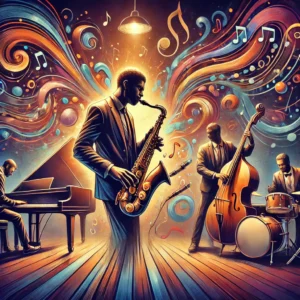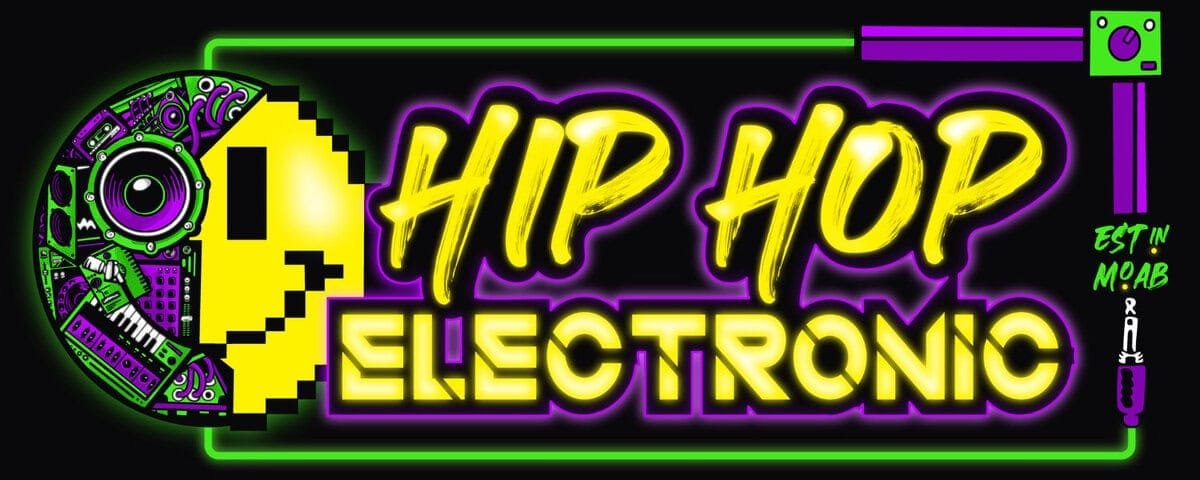Alright, so you think jazz is all about wearing berets and smoky rooms, huh? Well, contemporary jazz is flipping the script with electronic elements that'll knock your socks off! Just imagine synthesizers flirting with trumpets, creating new soundscapes like a musical marriage of Miles Davis and a futuristic robot. Artists like Kamasi Washington and Esperanza Spalding are spinning jazz into the tech domain with loops and digital effects, making it feel fresh yet cozy. So, if you're curious about how this fusion is evolving, just hang tight—there's a whole world of groovy beats waiting for you!
Key Takeaways
- Contemporary jazz incorporates synthesizers and electronic loops, enhancing traditional improvisation with innovative soundscapes.
- Digital audio workstations (DAWs) allow musicians to manipulate sounds and create intricate compositions, broadening jazz's creative possibilities.
- Artists like Kamasi Washington and Robert Glasper blend genres, merging jazz with hip-hop and R&B through electronic elements.
- Electroacoustic improvisations combine acoustic instruments with electronic effects, resulting in unique auditory experiences that challenge genre boundaries.
- The nu jazz movement integrates electronic rhythms, making jazz more accessible and appealing to diverse audiences.
Overview of Electronic Jazz
In the dynamic domain of contemporary jazz, electronic jazz stands out by seamlessly blending traditional elements with innovative electronic sounds. Imagine this: you're at a jazz club, and suddenly, the saxophonist pulls out a synthesizer—cue the jaw drop. That's electronic jazz for you! It's like jazz took a wild turn, inviting tape music, modified instruments, and synthesizers to the party, creating some seriously cool soundscapes.
This genre really kicked off in the 1960s, when artists like André Hodeir and Rahsaan Roland Kirk decided that adding a sprinkle of electronics could spice things up. They weren't just playing music; they were experimenting, using improvisational techniques to create magic.
Take Terry Riley's collaboration with Chet Baker, where they used tape delay—talk about mixing things up!
As technology advanced, musicians embraced new tools, which led to wild sound explorations that we now call electroacoustic improvisations.
Historical Context and Evolution
The journey of electronic elements in contemporary jazz began in the 1960s, when trailblazing musicians like Miles Davis pushed boundaries with synthesizers and electric instruments. You might think, "What's the big deal?" But trust me, when Davis dropped *Bitches Brew*, it was like jazz throwing a wild party with rock and electronic sounds crashing in.
Suddenly, the genre of jazz fusion emerged, mixing up everything from smooth improvisational techniques to funky rhythms.
Fast forward to the 1980s, and you've got Herbie Hancock strutting his stuff with *Future Shock*. Can you imagine? Jazz was now dancing to electronic beats like it was on a Saturday night!
The mid-1990s brought us downtempo legends like St Germain and Jazzanova, who showed that jazz could chill out while still holding its ground.
In the 2000s, digital audio workstations (DAWs) popped up, allowing musicians like you to explore innovative soundscapes. It's like giving a kid a box of crayons and telling them to go wild!
The cultural impact here is huge, changing how jazz is perceived and played. So, embrace the evolution—jazz isn't just a suit and tie anymore!
Key Artists and Innovators
While exploring the landscape of contemporary jazz, you'll quickly discover a vibrant array of key artists and innovators pushing the genre into exciting new territories.
Take Kamasi Washington, for instance—his album "The Epic" is like an audio adventure, filled with lush sounds and layers that can make your heart dance.
Then there's Esperanza Spalding, who blends jazz with everything from funk to rock, using electronic loops that make you wonder if she's a wizard or just really, really talented.
Don't sleep on Robert Glasper! He's the guy who fuses jazz with hip-hop and R&B, and his Grammy-winning album "Black Radio" is the proof that jazz can be cool in a way you'd want to show off to your friends.
Speaking of cool, GoGo Penguin, a British trio, mixes acoustic jazz with electronic flair—just imagine a prepared piano taking a trip through a futuristic soundscape.
And let's not forget Snarky Puppy, the experimental collective that's like a jazz buffet, blending genres and digital effects into something utterly delicious.
Influence of Technology
As contemporary jazz evolves, technology plays an essential role in shaping its sound and style. You might've noticed that jazz musicians now wield digital audio workstations (DAWs) like wizards with their magic wands, crafting complex soundscapes that would baffle even the most seasoned record producer.
Seriously, just when you thought you'd your favorite jazz record figured out, a synthesizer swoops in, and boom—there goes your understanding of reality!
Thanks to advancements in sound manipulation tools, like ring modulators, jazz artists are experimenting with textures that expand the genre far beyond its traditional boundaries. You can hear this in electroacoustic improvisations that blend acoustic instruments with electronic elements, making you wonder if your old saxophone could also be a spaceship.
And let's not forget the legends like Miles Davis and Herbie Hancock, who were the first to throw electronic sounds into the jazz mix, paving the way for today's innovators.
In the late '90s and early 2000s, nu jazz brought in electronic rhythms and hip-hop vibes, turning jazz into the cool kid on the block. Who knew technology could make jazz so accessible?
Future Trends in Jazz
Many jazz enthusiasts might be surprised to see how technology will continue to reshape the genre in the coming years.
Imagine this: you're at a jazz concert, and suddenly a saxophonist starts jamming with a digital audio workstation (DAW). It's like hearing a chef whip up a gourmet meal using a microwave—unexpected but oddly delicious! The fusion styles of acoustic and electronic elements are becoming the new norm, and let's face it, it's pretty exciting.
With hybrid performances on the rise, you'll witness electroacoustic improvisations that blend traditional jazz with contemporary beats—perfect for those of us who can't decide between a classic record and the latest playlist.
And speaking of new sounds, collaborations across Europe, from Belgium to France, are stirring the pot, creating a rich creative landscape that keeps us all on our toes.
As musicians continue to explore technology's influence, expect more inventive practices that amp up audience engagement.
Conclusion
So, there you have it! Electronic elements have jazzed up jazz in a way that even your grandma's old record player would tap its feet to. Just imagine an artist like Kamasi Washington mixing sounds from a theremin with a saxophone—now that's a wild jam session waiting to happen! As technology keeps evolving, who knows what kind of funky sounds will come next? Maybe even a jazz robot that can dance better than I can! And trust me, that's saying something.


